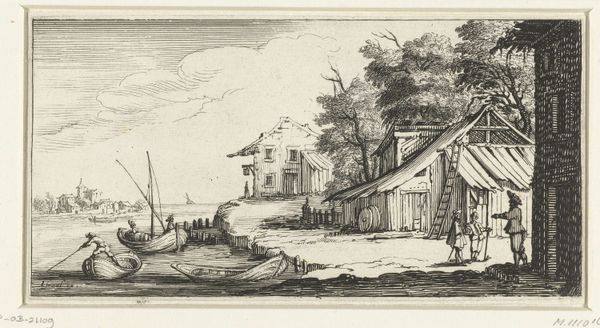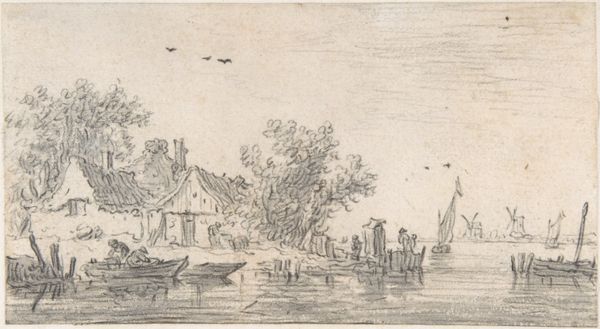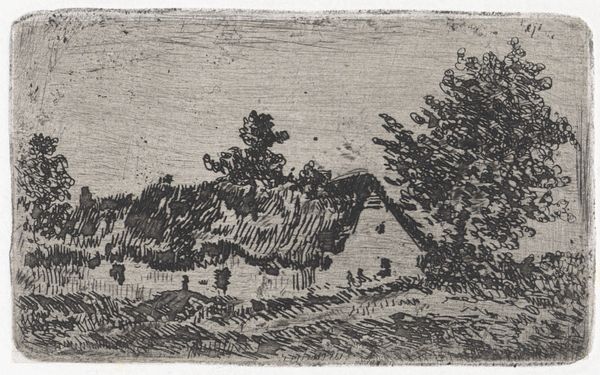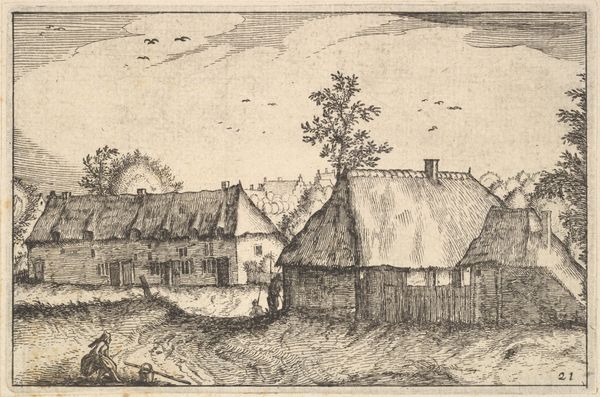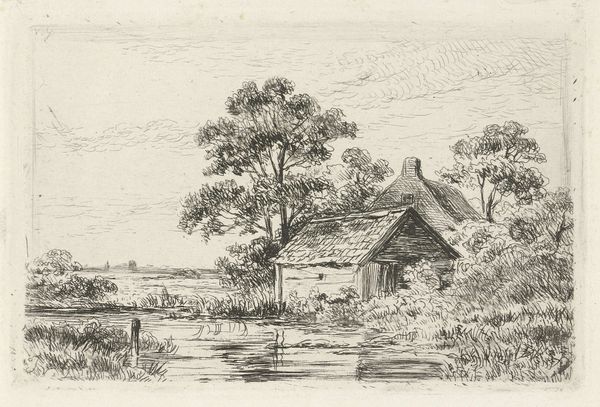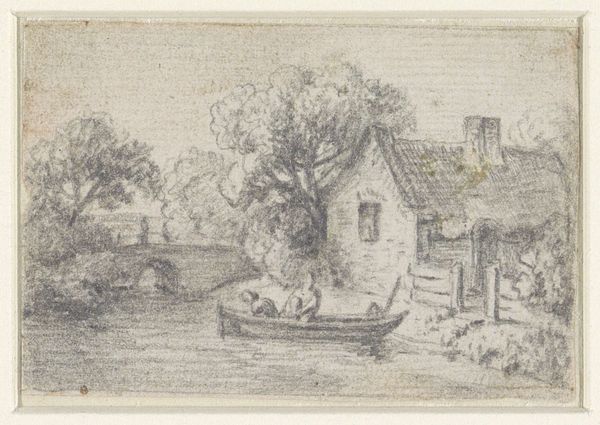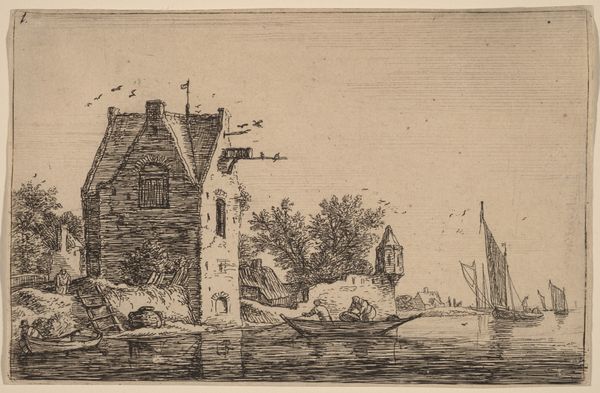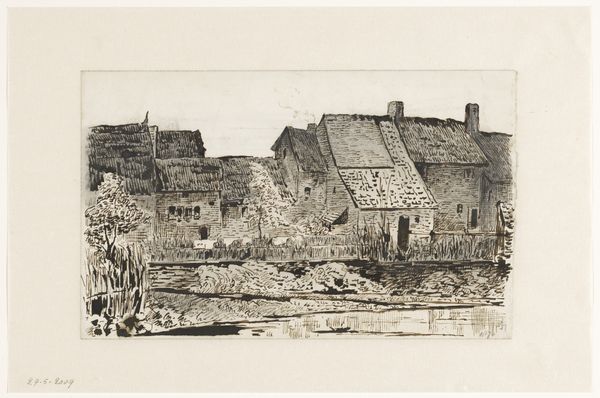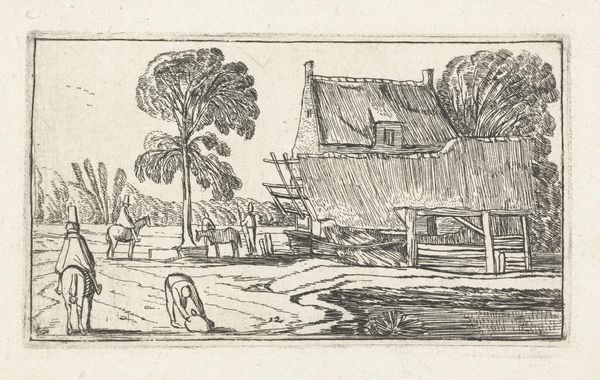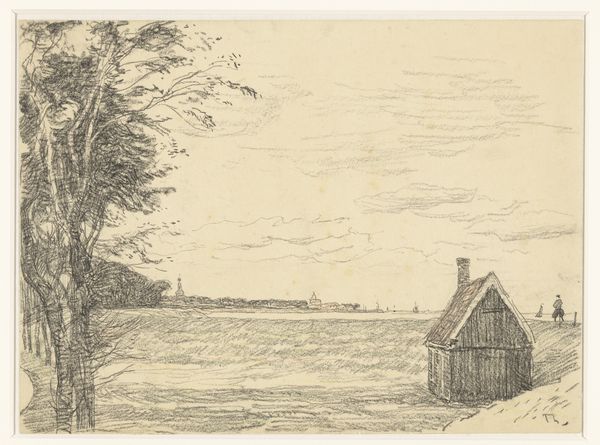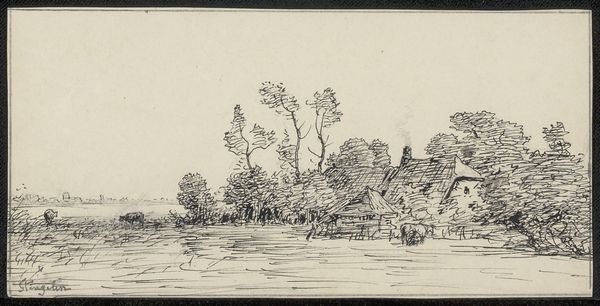
drawing, print, etching, ink
#
tree
#
drawing
#
light pencil work
#
ink drawing
# print
#
impressionism
#
pen sketch
#
etching
#
pencil sketch
#
incomplete sketchy
#
landscape
#
ink
#
ink drawing experimentation
#
pen-ink sketch
#
pen work
#
sketchbook drawing
#
sketchbook art
Dimensions: height 72 mm, width 181 mm
Copyright: Rijks Museum: Open Domain
Editor: This is Arnoud Schaepkens's "Waterrijk landschap met huizen en kale bomen aan de oever," dating from between 1855 and 1904. It looks like an etching, and the scene is so delicate, almost dreamlike. What draws your eye when you look at this print? Curator: Well, the medium itself, the etching, immediately speaks of a specific mode of production. We're not dealing with a unique object laboriously crafted by hand, but with something reproducible, made with the intention of wider distribution and consumption. Look at the level of detail achieved through the etching process. This hints at an artistic project deeply enmeshed with the social and economic conditions of the time. Consider how such prints democratized access to images. Does it change how you look at it? Editor: I see what you mean. Knowing it could be reproduced shifts the focus from the artist’s singular touch to the process. What about the subject matter, though? The houses and bare trees suggest a specific time, perhaps winter… Curator: Exactly. Landscape imagery like this can also be seen as a commodity. Etchings like this catered to a growing urban market, romanticizing rural life while simultaneously abstracting and packaging it for consumption. Who owned these houses? Who labored in that landscape? The image provides aesthetic pleasure but obscures the material realities of its production and the socio-economic conditions of the depicted landscape. Editor: That’s fascinating. I hadn’t considered how the landscape itself could be a kind of…product. It’s making me rethink my initial impression of it. Curator: And perhaps that reflection helps us understand both the artwork and its position within the economic and social structure of its time. Looking closer, what do you see in the texture? The lines... How does it remind us of work? Editor: This etching now seems like a portal, revealing the relationships between art, labor, and landscape in the 19th century. Thanks, that's incredibly helpful.
Comments
No comments
Be the first to comment and join the conversation on the ultimate creative platform.
